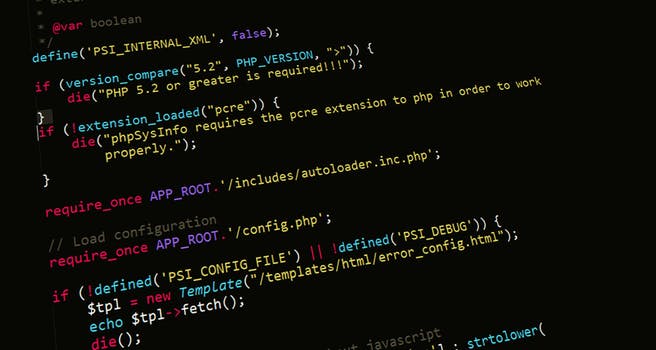TheDeveloperBlog.com
C-Sharp | Java | Python | Swift | GO | WPF | Ruby | Scala | F# | JavaScript | SQL | PHP | Angular | HTML
Swift Set Collection: Insert and Contains
Use the set collection. Insert elements into a set, and use contains and set logic.Set. This collection allows no duplicate elements. It uses hash codes to test for equality between elements. A set has fast logic tests.
With methods, we perform simple actions like insertion. We can test to see if an element exists. With set operations, we can see if 2 sets intersect.
First program. Here we create an empty set. We then insert() 4 strings into it. The last two strings are the same—only one is retained in the set.
Count: This returns 3, the number of elements retained in the set. The duplicate element is not counted.
Print: We use this func to display the elements present. This is a useful debugging technique.
Swift program that uses set
// Create a set and add Strings to it.
var animals = Set<String>()
animals.insert("cat")
animals.insert("bird")
animals.insert("dog")
animals.insert("dog")
// Only unique elements are stored in the set.
print(animals.count)
// The second dog element is not present.
print(animals)
Output
3
["bird", "cat", "dog"]
Remove, contains. We use remove() to erase an element from a set. And with contains() we see whether an element (the argument) exists. It returns true or false.
Swift program that uses remove, contains
var knownIds = Set<Int>()
knownIds.insert(100)
knownIds.insert(200)
knownIds.insert(300)
// Remove this Int from the set.
knownIds.remove(200)
// This is contained within the set.
if knownIds.contains(100) {
print(true)
}
// Not contained.
if !knownIds.contains(200) {
print(false)
}
Output
true
false
For-in loop. With the for-in loop we can access all the elements in a set. This provides not indexes, but often we do not need indexes.
Swift program that uses for-in loop
var languages = Set<String>()
languages.insert("Swift")
languages.insert("Python")
languages.insert("Ruby")
// Loop over all elements in the set.
// ... Ordering is not maintained.
for language in languages {
print(language)
}
Output
Python
Ruby
Swift
Intersection, subtract. This program first initializes sets with initializer syntax. This is an easier way to create a new set from known element.
Intersection: We call intersection to find the elements that are present in both sets (that intersect). A new set is returned.
Subtract: This removes elements from one set that are present in another. It modifies the first set in-place.
Swift program that uses set initializer, intersect, subtract
let colors1: Set<String> = ["red", "orange", "pink"]
let colors2: Set<String> = ["blue", "red", "pink"]
// Intersection returns a set of the two shared Strings.
// ... Red and pink are shared.
let intersection = colors1.intersection(colors2)
print(intersection)
// Subtract removes shared values.
// ... Red and pink are removed in the set.
// ... The colors1 set is modified in-place.
colors1.subtract(colors2)
print(colors1)
Output
["pink", "red"]
["orange"]
A summary. Sets have many uses in programs. They help with simple requirements, like ensuring uniqueness. More advanced things, like set operations, are less often needed.
© TheDeveloperBlog.com
The Dev Codes
Related Links:
- Swift String Append Example: reserveCapacity
- Swift File (Read Text File Into String)
- Swift Find Strings: range of Example
- Swift Subscript Example
- Swift hasPrefix and hasSuffix Examples
- Swift Array of Dictionary Elements
- Swift Tutorial
- Swift Odd and Even Numbers
- Swift Operator: Equality, Prefix and Postfix
- Swift Dictionary Examples
- Swift Class Example: init, self
- Swift Combine Arrays: append, contentsOf
- Swift Initialize Array
- Swift Int Examples: Int.max, Int.min
- Swift 2D Array Examples
- Swift Error Handling: try, catch
- Swift Repeat While Loop
- Swift Optional: Nil Examples
- Swift Replace String Example
- Swift Print: Lines, Separator and Terminator
- Swift inout Keyword: Func Example
- Swift Lower, Uppercase and Capitalized Strings
- Swift enum Examples: case, rawValue
- Swift Padding String Example (toLength)
- Swift UIActivityIndicatorView Example
- Swift UIAlertController: Message Box, Dialog Example
- Swift UIButton, iOS Example
- Swift UICollectionView Tutorial
- Swift UIColor iOS Example: backgroundColor, textColor
- Swift UIFont Example: Name and Size
- Swift UIImageView Example
- Swift UIKit (Index)
- Swift UILabel Tutorial: iPhone App, Uses ViewController
- Swift String
- Swift Remove Duplicates From Array
- Swift If, If Else Example
- Swift Caesar Cipher
- Swift UIStepper Usage
- Swift UISwitch: ViewController
- Swift UITableView Example: UITableViewDataSource
- Swift UITextField: iPhone Text Field Example
- Swift UITextView Example
- Swift UIToolbar Tutorial: UIBarButtonItem
- Swift UIWebView: LoadHtmlString Example
- Swift Var Versus Let Keywords
- Swift Math: abs, sqrt and pow
- Swift Reverse String
- Swift Struct (Class Versus Struct)
- Top 22 Swift Interview Questions (2021)
- Swift Substring Examples
- Swift Switch Statements
- Swift Convert Int to Character: UnicodeScalar, utf8
- Swift Property Examples
- Swift isEmpty String (characters.count Is Zero)
- Swift Recursion
- Swift ROT13 Func
- Swift Convert String to Byte Array: utf8 and UInt8
- Swift Keywords
- Swift Convert String to Int Example
- Swift Join Strings: joined, separator Examples
- Swift String Literal, Interpolation
- Swift Extension Methods: String, Int Extensions
- Swift Characters: String Examples
- Swift Func Examples: Var, Return and Static
- Swift Guard Example: Guard Else, Return
- Swift Fibonacci Numbers
- Swift Trim Strings
- Swift Set Collection: Insert and Contains
- Swift Tuple Examples
- Swift Loops: for, repeat and while Examples
- Swift Split Strings Example (components)
- Swift Array Examples, String Arrays
- Swift UIPickerView Example: UIPickerViewDataSource
- Swift UIProgressView Example: Progress
- Swift UISegmentedControl
- Swift UISlider Example
- Swift Random Numbers: arc4random
- Swift ASCII Table
- Swift Range Examples (index, offsetBy)
- Swift String Length
- Swift Sort String Arrays: Closure Examples